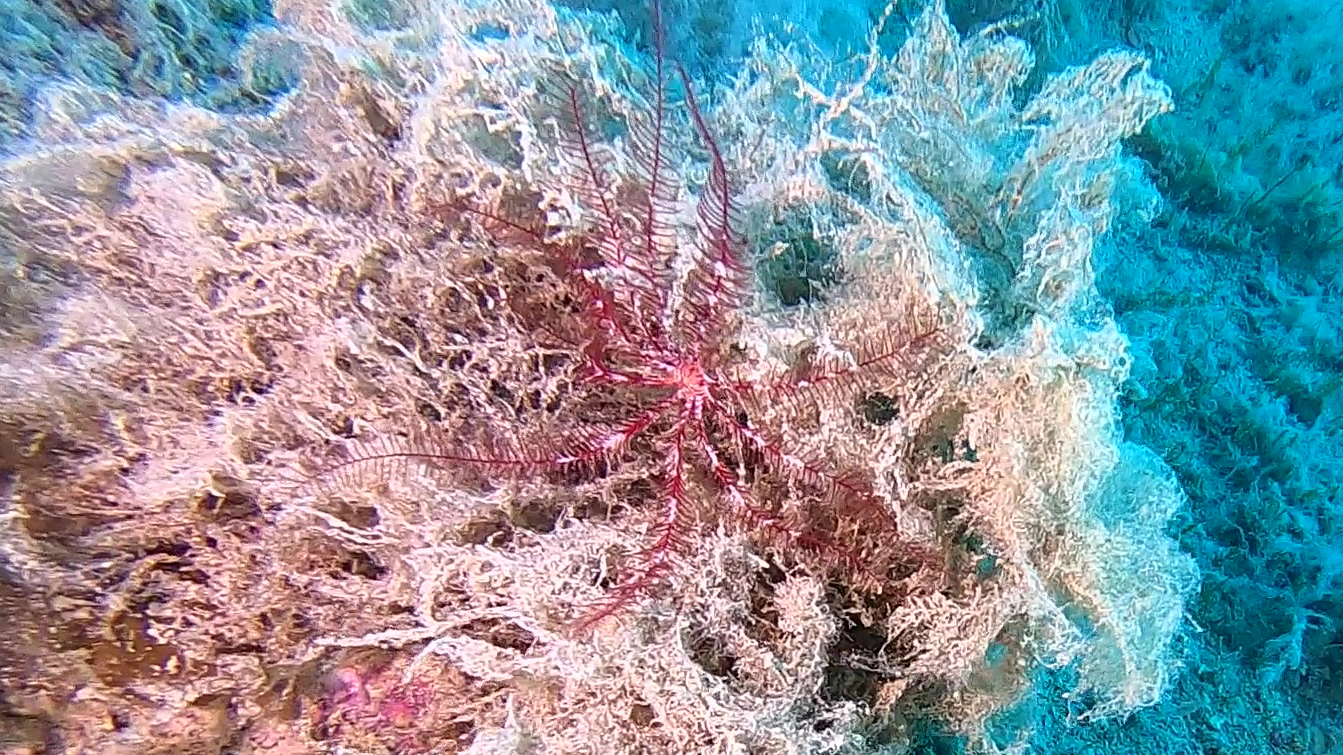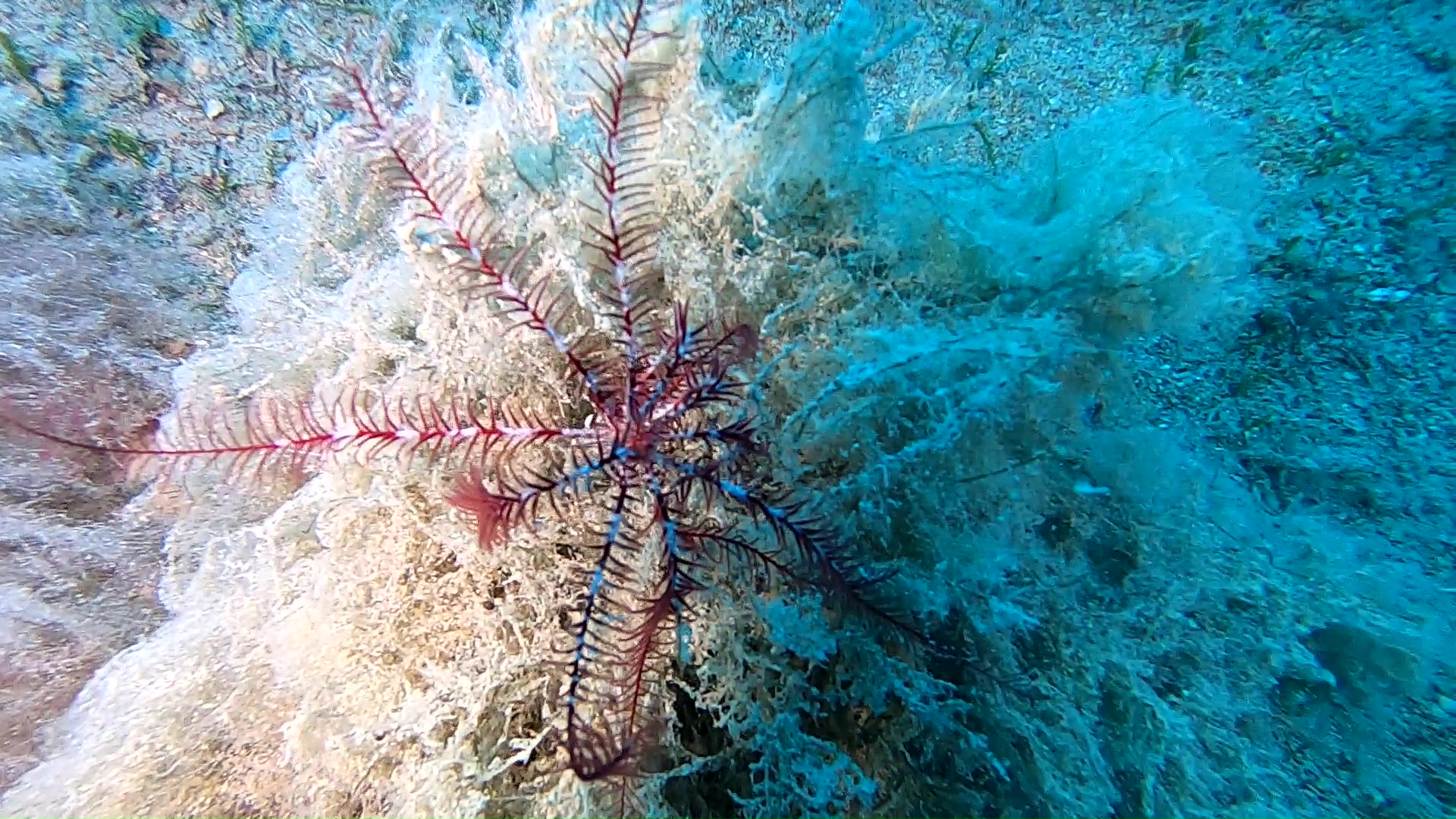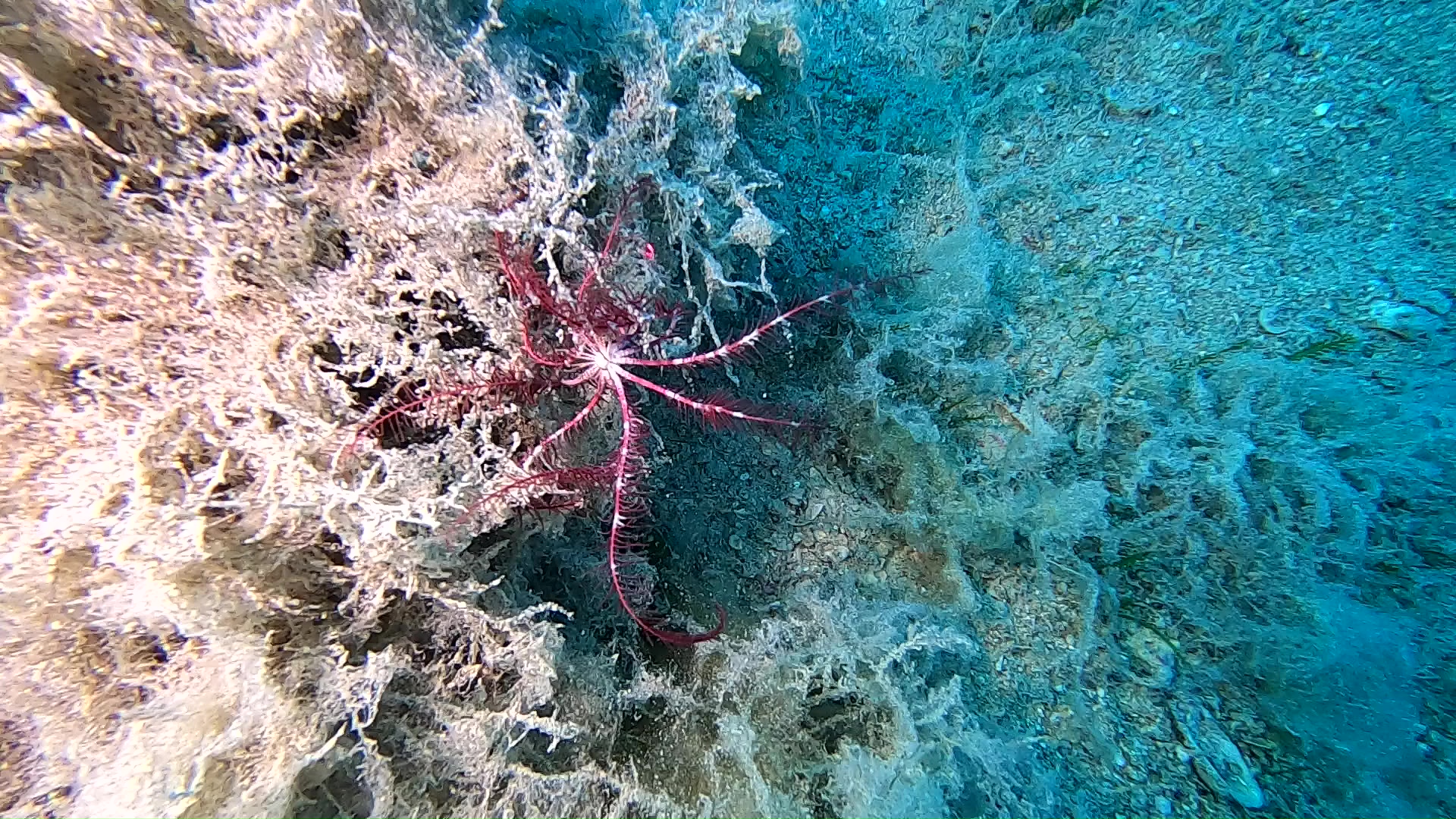Mediterranean feather star - Antedon Mediterranea
Antedon Mediterranea – Mediterranean feather star – is one of the most filmed animal by underwater photographers, certanly for the colors of this splendid owl but above all for the scarce mobility and morphological characteristics of the ten tentacles of the starfish remeber the most famous feathered starfish of tropical seas. Antedon Mediterranea Giglio di mare Mediterranean feather star intotheblue.it

Mediterranean feather star (Antedon Mediterranea), Lamarck, 1816) is a crinoid of the Antedonidae family, endemic to the Mediterranean Sea.
Description It is a crinoid without a peduncle, which is temporarily anchored to the substrate by means of numerous mobile claw-shaped cirrus clouds, articulated directly at the base of the calyx. About ten arms with a feathery appearance branch off from the chalice, forming a crown of 20-25 cm in diameter, varying in color from white to red, from yellow to orange.
Biology They spend most of their time anchored to the substrate, but if disturbed they are able to detach and move. They are lucifugous organisms and therefore meet in shady areas and during the night.

Mediterranean Antedon feeds by filtering plankton and other small particles from seawater. The food is then enveloped in mucus and passed from the feet of the tube along the ambacral grooves on the arms to the central mouth which is on the upper side of the calyx. Mediterranean Antedon can move to a limited extent by crawling on its cirrus clouds, “swimming”, alternately raising and lowering its ten arms five at a time, or “walking” on the seabed leaning on the tips of the arms and panting together.
The sexes are separated and the gonads are located in the pinnules of the lower arms. Spawning occurs annually, mainly in spring and is believed to be triggered by the production of testosterone in the male and 17β-estradiol in the female. Fertilization takes place in water and the embryos are cemented to the pinnules. They hatch into freely swimming barrel-shaped doliolaria larvae that can move using synchronized movements of their eyelash bands. The production of serotonin stimulates them to settle on the sea floor, to anchor themselves to temporary stems and to undergo metamorphosis into young starfish.

Diet They are passive filtering organisms, which feed on a variety of protists (diatoms and other unicellular algae, foraminifera), invertebrate larvae, small crustaceans and organic debris.
Reproduction They are gonocorical animals, that is, with separate sexes. Gametes are produced by specialized pinnules located at the base of the arms, and fertilization is external. The eggs remain attached to the arms until they hatch.
The larvae are planktonic in the first phase of development, in the following phases they are fixed to the substrate by means of a peduncle. Upon completion of development, the stalk breaks off and the young adults become mobile again.
Distribution and habitat The species is widespread on the seabed of the Mediterranean Sea, from 15 to 80 meters deep. It grows on rocky bottoms rich in algae, sandy bottoms and Posidonia meadows.
https://it.wikipedia.org/wiki/Antedon_mediterranea https://en.wikipedia.org/wiki/Antedon_mediterranea
Gallery
Video Gallery
